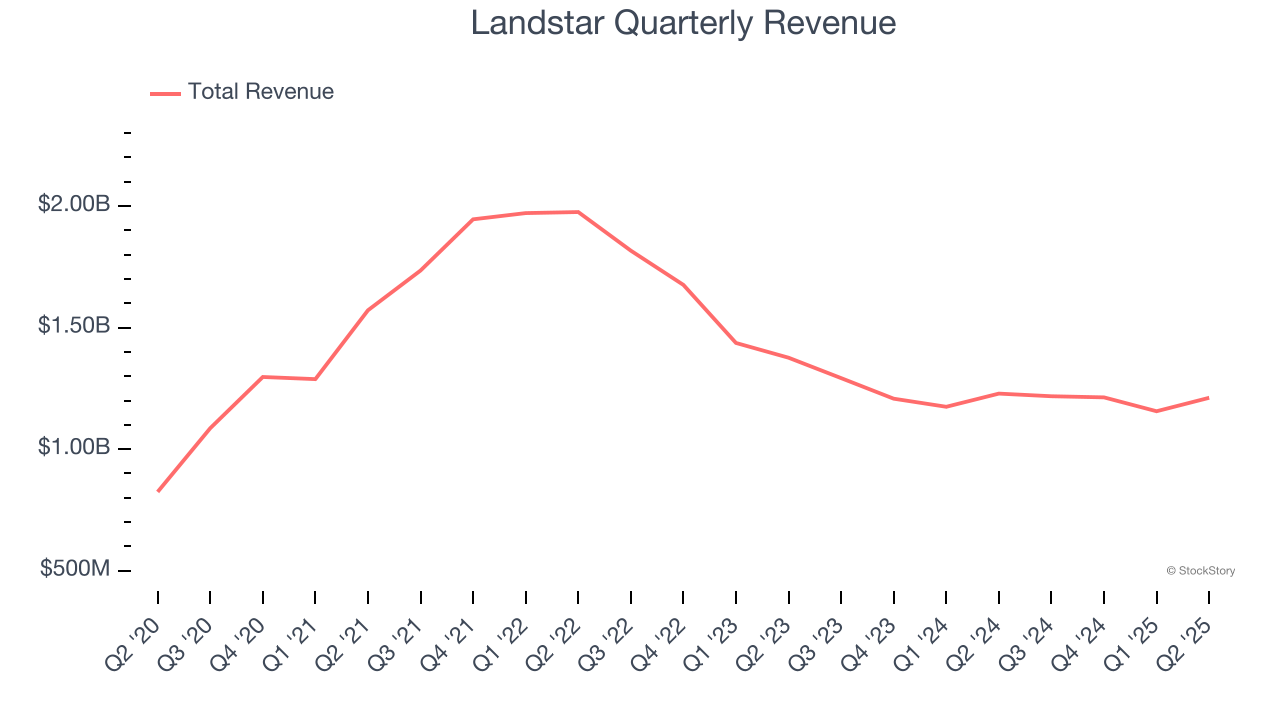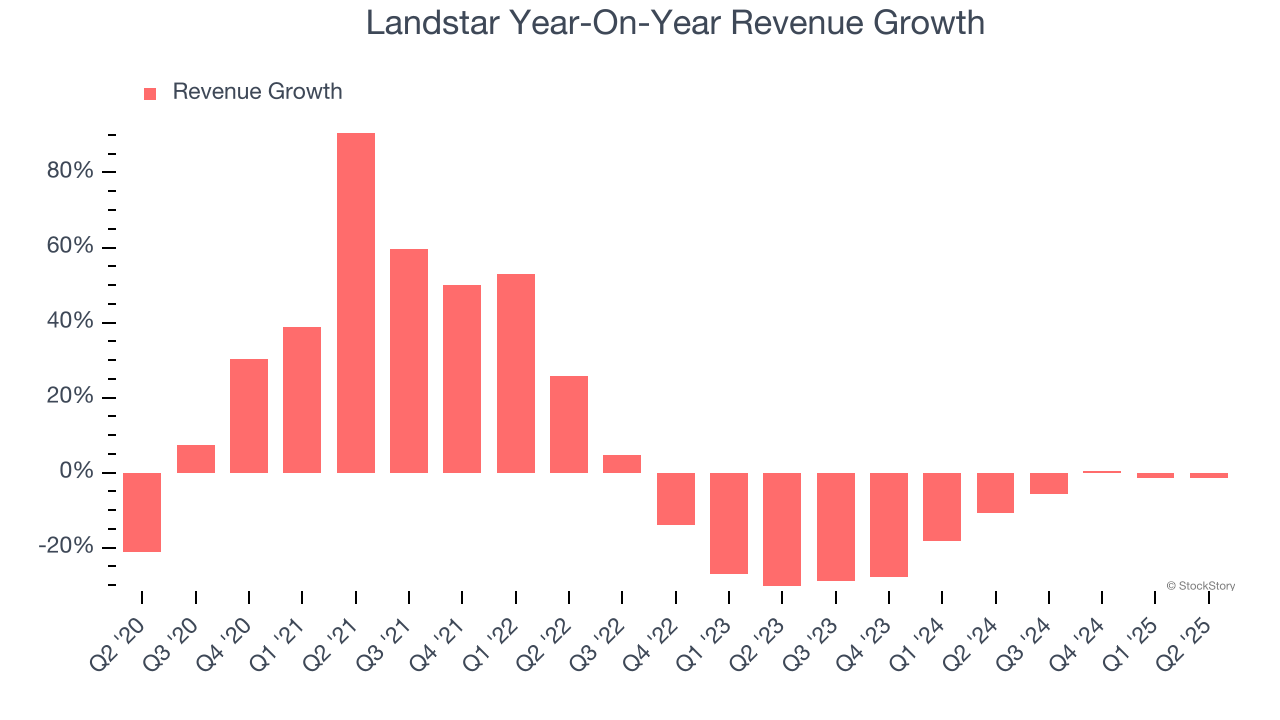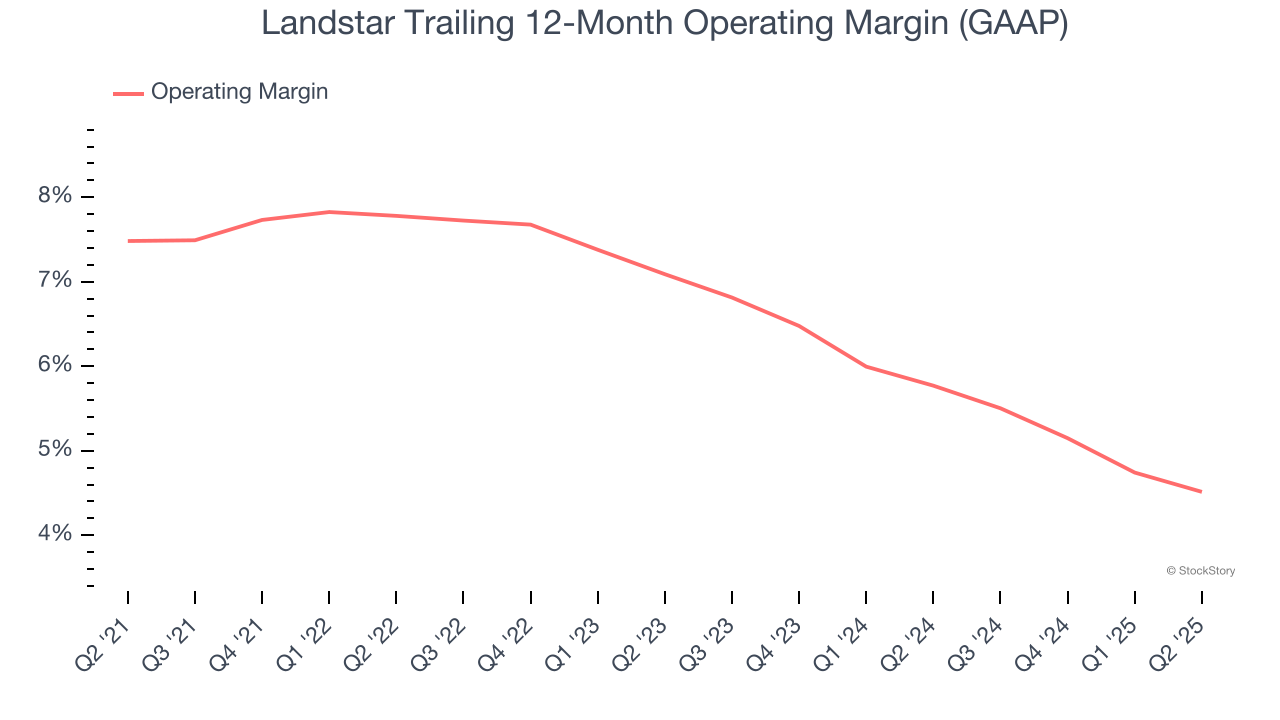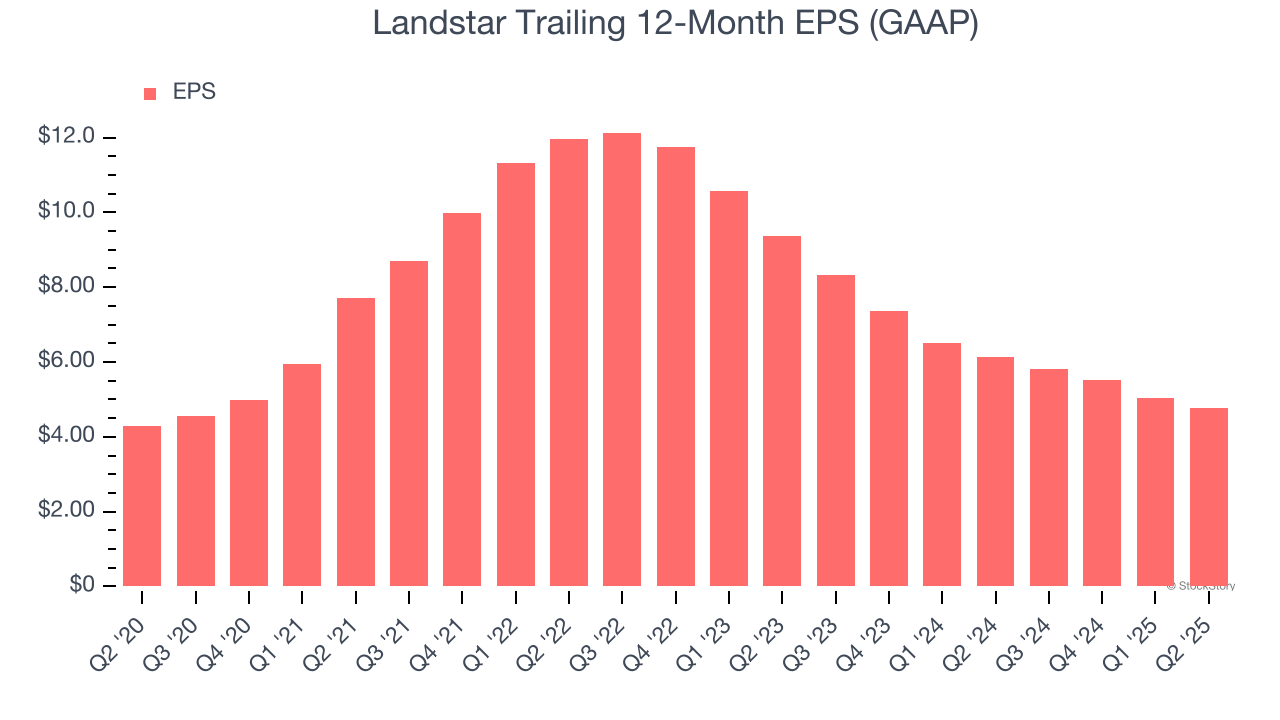
Freight delivery company Landstar (NASDAQ:LSTR) met Wall Street’s revenue expectations in Q2 CY2025, but sales fell by 1.4% year on year to $1.21 billion. Its GAAP profit of $1.20 per share was 1.8% above analysts’ consensus estimates.
Is now the time to buy Landstar? Find out by accessing our full research report, it’s free.
Landstar (LSTR) Q2 CY2025 Highlights:
- Revenue: $1.21 billion vs analyst estimates of $1.21 billion (1.4% year-on-year decline, in line)
- EPS (GAAP): $1.20 vs analyst estimates of $1.18 (1.8% beat)
- Adjusted EBITDA: $68.43 million vs analyst estimates of $66.02 million (5.6% margin, 3.7% beat)
- Operating Margin: 4.6%, in line with the same quarter last year
- Market Capitalization: $4.93 billion
JACKSONVILLE, Fla., July 29, 2025 (GLOBE NEWSWIRE) -- Landstar System, Inc. (NASDAQ: LSTR) (“Landstar” or the “Company”) today reported basic and diluted earnings per share (“EPS”) of $1.20 in the 2025 second quarter on revenue of $1.211 billion.
Company Overview
Covering billions of miles throughout North America, Landstar (NASDAQ:LSTR) is a transportation company specializing in freight and last-mile delivery services.
Revenue Growth
Examining a company’s long-term performance can provide clues about its quality. Any business can put up a good quarter or two, but many enduring ones grow for years. Over the last five years, Landstar grew its sales at a tepid 5% compounded annual growth rate. This was below our standard for the industrials sector and is a rough starting point for our analysis.

Long-term growth is the most important, but within industrials, a half-decade historical view may miss new industry trends or demand cycles. Landstar’s performance shows it grew in the past but relinquished its gains over the last two years, as its revenue fell by 12.8% annually. Landstar isn’t alone in its struggles as the Ground Transportation industry experienced a cyclical downturn, with many similar businesses observing lower sales at this time. 
We can dig further into the company’s revenue dynamics by analyzing its most important segments, Van Equipment and Platform Equipment, which are 48.8% and 33.1% of revenue. Over the last two years, Landstar’s Van Equipment revenue (full truckload van transportation) averaged 13.4% year-on-year declines while its Platform Equipment revenue (full truckload trailer transportation) averaged 5% declines.
This quarter, Landstar reported a rather uninspiring 1.4% year-on-year revenue decline to $1.21 billion of revenue, in line with Wall Street’s estimates.
Looking ahead, sell-side analysts expect revenue to grow 5.8% over the next 12 months. Although this projection implies its newer products and services will catalyze better top-line performance, it is still below average for the sector.
Today’s young investors won’t have read the timeless lessons in Gorilla Game: Picking Winners In High Technology because it was written more than 20 years ago when Microsoft and Apple were first establishing their supremacy. But if we apply the same principles, then enterprise software stocks leveraging their own generative AI capabilities may well be the Gorillas of the future. So, in that spirit, we are excited to present our Special Free Report on a profitable, fast-growing enterprise software stock that is already riding the automation wave and looking to catch the generative AI next.
Operating Margin
Landstar was profitable over the last five years but held back by its large cost base. Its average operating margin of 6.7% was weak for an industrials business. This result isn’t too surprising given its low gross margin as a starting point.
Analyzing the trend in its profitability, Landstar’s operating margin decreased by 3 percentage points over the last five years. This raises questions about the company’s expense base because its revenue growth should have given it leverage on its fixed costs, resulting in better economies of scale and profitability. We’ve noticed many Ground Transportation companies also saw their margins fall (along with revenue, as mentioned above) because the cycle turned in the wrong direction, but Landstar’s performance was poor no matter how you look at it. It shows that costs were rising and it couldn’t pass them onto its customers.

In Q2, Landstar generated an operating margin profit margin of 4.6%, in line with the same quarter last year. This indicates the company’s cost structure has recently been stable.
Earnings Per Share
We track the long-term change in earnings per share (EPS) for the same reason as long-term revenue growth. Compared to revenue, however, EPS highlights whether a company’s growth is profitable.
Landstar’s EPS grew at a weak 2.1% compounded annual growth rate over the last five years, lower than its 5% annualized revenue growth. This tells us the company became less profitable on a per-share basis as it expanded due to non-fundamental factors such as interest expenses and taxes.

We can take a deeper look into Landstar’s earnings to better understand the drivers of its performance. As we mentioned earlier, Landstar’s operating margin was flat this quarter but declined by 3 percentage points over the last five years. This was the most relevant factor (aside from the revenue impact) behind its lower earnings; interest expenses and taxes can also affect EPS but don’t tell us as much about a company’s fundamentals.
Like with revenue, we analyze EPS over a shorter period to see if we are missing a change in the business.
Landstar’s two-year annual EPS declines of 28.7% were bad and lower than its two-year revenue performance.
In Q2, Landstar reported EPS at $1.20, down from $1.48 in the same quarter last year. Despite falling year on year, this print beat analysts’ estimates by 1.8%. Over the next 12 months, Wall Street expects Landstar’s full-year EPS of $4.77 to grow 19.4%.
Key Takeaways from Landstar’s Q2 Results
It was encouraging to see Landstar beat analysts’ EBITDA expectations this quarter despite in line revenue. Overall, this print was solid. The stock remained flat at $137.92 immediately following the results.
Is Landstar an attractive investment opportunity at the current price? We think that the latest quarter is only one piece of the longer-term business quality puzzle. Quality, when combined with valuation, can help determine if the stock is a buy. We cover that in our actionable full research report which you can read here, it’s free.
